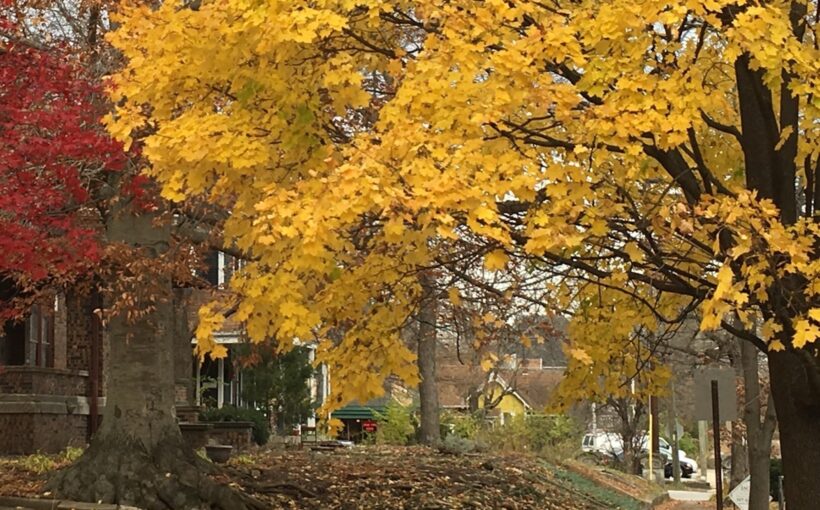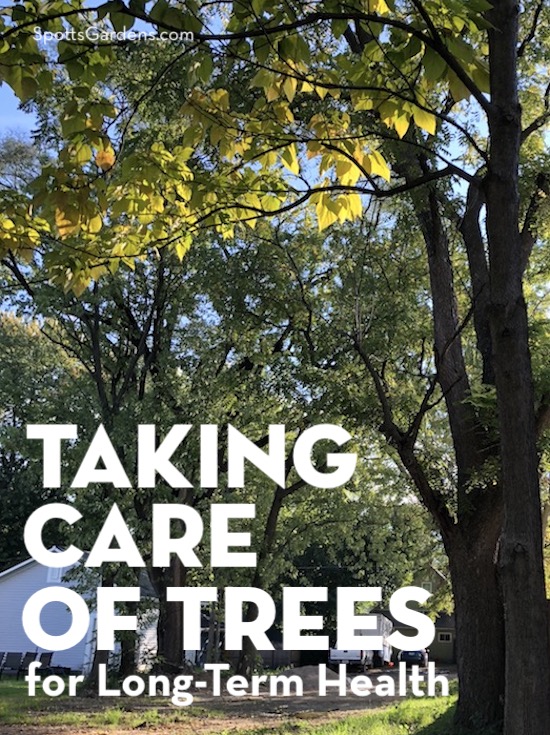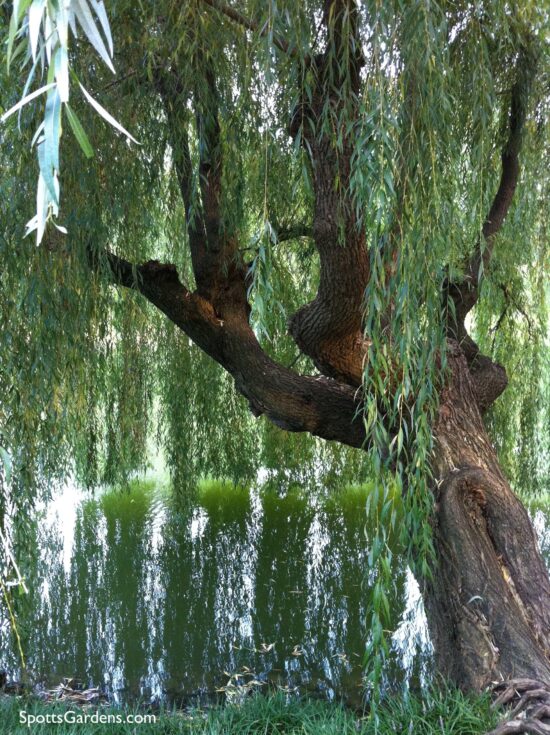Tree care doesn’t register high on most homeowner’s to-do list, even though trees are a valuable assets. In fact, healthy trees can increase your property value up to 15 percent! Our trees support insects and other wildlife, reduce energy consumption, mitigate stormwater runoff, and offer a host of other benefits.
Trees in human spaces require smart selection and regular maintenance to make them good neighbors. Whether you’re considering planting or you’ve inherited mature one, you can keep your trees healthy for the long term with these guidelines.
Put the Right Plant in the Right Place
As with all plants, you need to match the tree to the conditions it will grow in, instead of trying to fit the plant into the wrong space.
- Choose a tree that’s appropriate for the light and water conditions available. We can help you choose the right tree for almost any condition, from shady bogs to sunny lawns.
- Match the mature size of your tree to the space available. If you will faithfully and carefully prune at least twice a year to deliberately keep a tree small, you can ignore this guideline. The other 99.8 percent of homeowners should choose a tree that will not outgrow its space.
- If you are in the city, choose a tree that can handle urban conditions. Cities have more extensive temperature swings, hotter overall temperatures, high levels of water runoff, and air pollution. So avoid trees that can’t adapt to those conditions.
- Avoid trees that create nuisance conditions near streets, sidewalks, and driveways. That includes trees that drop a bunch of litter (sweet gums and willows, for example), drop fruit that rots or causes slick spots, or are prone to weak wood and dropped limbs (like beautiful but weak-wooded yellowwood). Save these trees for areas where they aren’t likely to damage anything.
- Do not plant tall trees under power lines. We’ll help you find a small-stature tree for that spot, or a better place for the tall tree.
Check out Choosing Shade Trees for Midwestern Gardens and Native Small Trees for Midwestern Gardens for some of our favorites. Or contact us to choose the right one for you!
Start Off Strong
Planting correctly and watering regularly gives your tree the best possible start.
- Select a young tree instead of a more mature one. They’re less likely to suffer transplant shock, they cost considerably less, and they are vastly better at adapting to planting. We generally plant trees only up to 1.5″ caliper, meaning the trunk is about 1.5″ across.
- Plant it correctly (or have us do it). Most people plant trees too deeply; a correctly planted tree has its uppermost, main roots right at the soil level or just under it. Purdue University Cooperative Extension Service has step-by-step instructions here.
- Take the cage and wrappings off balled-and-burlapped trees before planting. Or we’ll have to do it for you in ten years when that cage starts to damage the health of the tree.
- Create a large mulch ring around the tree, with the mulch piled at the outermost edges to funnel water to the tree. Don’t push the mulch up against the trunk.
- Water. Put the hose on a trickle, and let the water throughly soak the root ball. You need to consistently water until the roots are established, which takes years. So keep watering! See guidelines here.
Establish Good Habits
Tree care includes pruning, mulching, and watering. Establish these routines early to avoid problems later.
- Correct structural issues when the tree is young. Pruning for the first three to five years of a tree’s life creates a well-shaped framework and can reduce the need for pruning at maturity. We do some corrective pruning when we plant, then check in for the first several years to correct issues as they occur.
- Have young trees dormant pruned in late winter or early spring. Pruning for structure requires an experienced pruner, so contact us.
- Plan to prune fruit trees every year in late winter or spring. If you’re deliberately keeping your fruit trees small, you’ll need to do summer pruning too. Dormant prune apples, pears, and quince in late winter or early spring. Prune stone fruits (cherries, peaches, plums, etc.) during or just after bloom instead.
- Keep watering. A tree that’s 1″ caliper when planted needs 1″ to 1.5″ of water each week for a year and a half before its roots become established. But a tree planted at 4″ caliper needs 4″ to 6″ of water a week for six years before its roots are established.
- Mulch correctly and only after the soil has warmed in spring. Do not cover the tree’s root flare—the part of the trunk that flares out when it meets the ground.
Care for Mature Trees
If your trees were correctly pruned while young, they won’t require much intervention when mature. But if your trees do need some help, hire a pro. Spotts Garden Service works on trees up to 30′ tall. For trees taller than that, hire a certified arborist for tree care.
- Hire an arborist for a consult every ten years or as necessary. We recommend homeowners with mature trees periodically hire an ISA Certified Arborist to evaluate the health of their trees and recommend any necessary tree care. Certified arborists are throughly trained in tree health and sign a code of ethics; they know how to prevent damage to trees, property, and people. Search for a certified arborist at the ISA website.
- For trees above 30′ tall, hire an arborist if you want to remove dead wood in the canopy, reduce the size of a tree, open up the canopy for more light, or change the structure of a tree. We can help you with smaller trees.
- Use good pruning technique. Correct pruning preserves the shape of a tree, removing individual branches where they meet a larger limb or the trunk. You won’t see any stubs on a correctly pruned tree.
- Do not allow anyone to top your trees. Topping means the tree gets a buzz cut with no regard to the tree’s proper structure . Topping distorts the shape of the tree and encourages lots of weak growth at the cut site, resulting in limbs more likely to break. And it doesn’t reduce the size of trees, which immediately grow a lot of leaves to replace what’s been removed. Read more about topping here.
- Water during drought. Mature trees can usually handle some dry weather. But if we go for several weeks with no rain, water your trees once a week for as long as the drought persists. Remember, they’re adding to your property value. Large trees are irreplaceable.
Plant Some Trees!
If you’re ready to plant trees or want help managing tree care, contact us today to schedule a garden visit.


